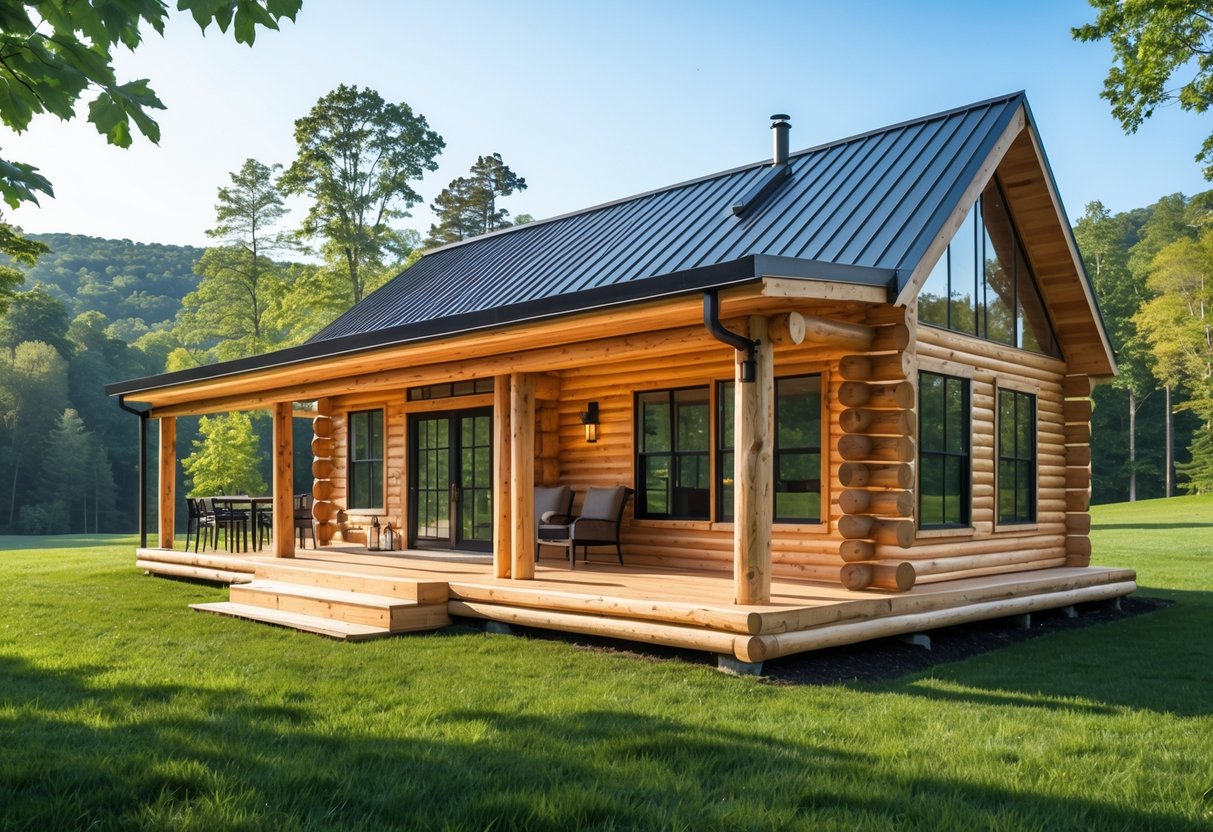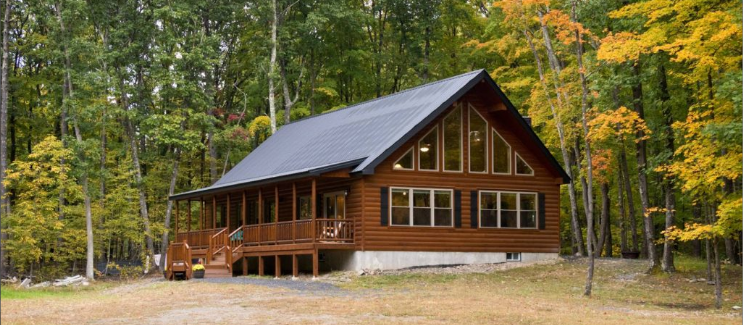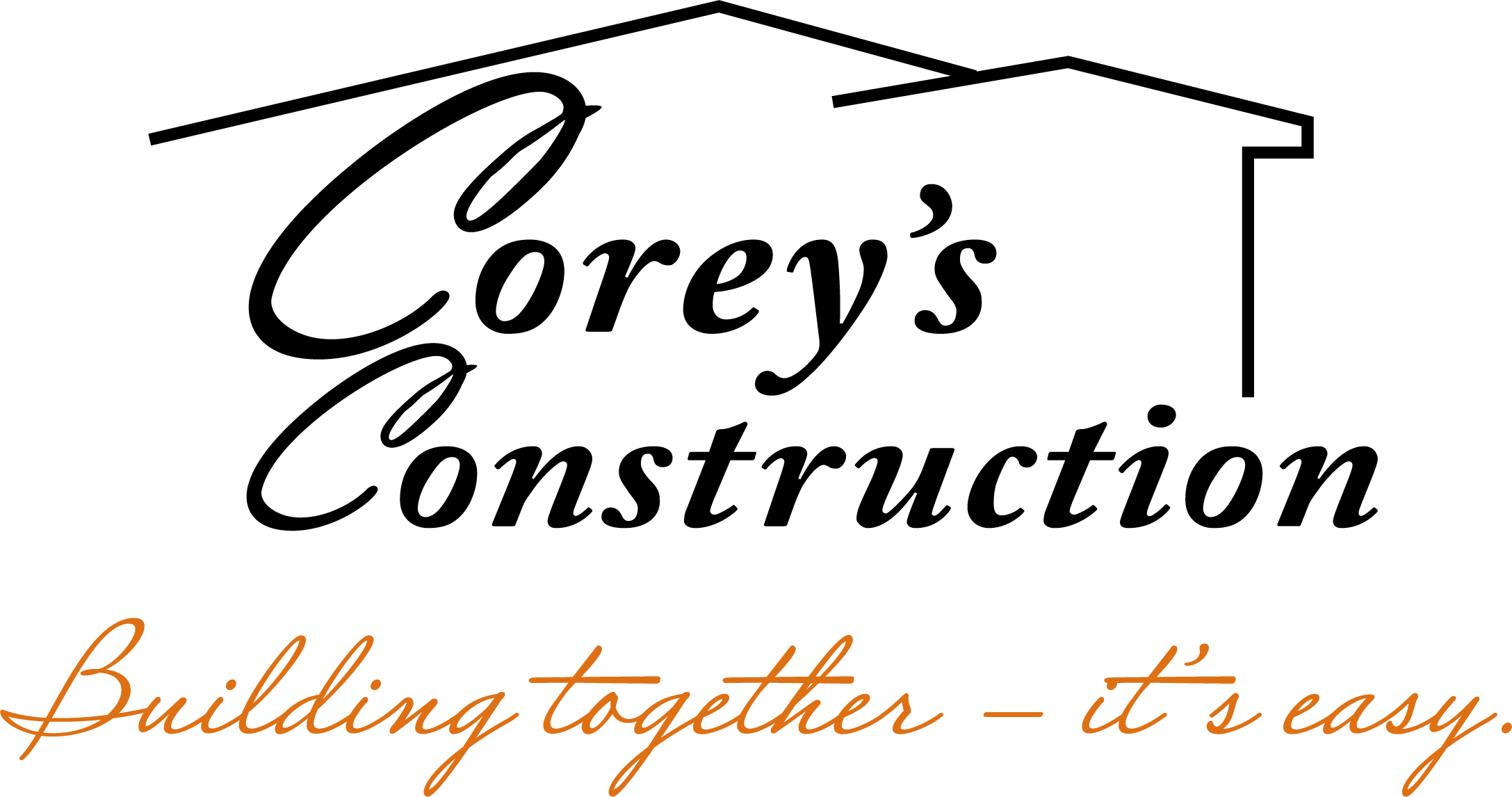Building or buying a home involves more than blueprints and budgets—it also means protecting your investment from the start. You may hear about both builder risk and homeowner insurance, but they don’t serve the same purpose. Builder risk insurance protects a home while it’s being built or renovated, while homeowner insurance covers it after construction is complete.
You need the right coverage at the right time to avoid costly gaps. Builder risk insurance, sometimes called “course of construction” coverage, protects against theft, vandalism, fire, or weather damage during construction. Once the home is finished and ready to live in, homeowner insurance takes over to cover the structure, your belongings, and liability for accidents.
Understanding when each policy applies helps you stay insured from the first nail to move-in day. Choosing the right coverage ensures your project and property stay protected through every stage of homeownership.
Key Takeaways
- Builder risk covers homes under construction or renovation.
- Homeowner insurance protects completed homes and personal property.
- Switching coverage at the right time prevents gaps in protection.
Core Differences Between Builder Risk and Homeowner Insurance
Each policy protects property in different stages of ownership and construction. A builder’s risk policy focuses on the structure while it’s being built, while homeowners insurance protects your completed home and personal belongings after you move in.
Purpose and Application
A builder’s risk policy covers a home or building under construction or renovation. It protects against losses like fire, theft, vandalism, and weather damage that occur before the property is complete. This type of policy is often called course of construction insurance and is designed to protect the builder’s financial investment.
Homeowners insurance, on the other hand, applies once the property is finished and occupied. It protects your home’s structure, your belongings, and your liability if someone gets injured on your property. It also pays for additional living expenses if you can’t stay in your home after a covered event.
You can read more about what each covers in this Builder Risk vs. Homeowners Insurance guide.
Who Needs Each Policy
You need a builder’s risk policy if you are constructing a new home, remodeling, or performing major renovations. Builders, contractors, and property owners often carry this coverage to protect materials, labor, and temporary structures like scaffolding or fencing. It ensures that damage during construction doesn’t cause major financial loss.
You need homeowners insurance once construction is complete and you take possession of the home. This policy is usually required by mortgage lenders before closing. It protects your dwelling, personal property, and liability. If you live in the home, this policy is essential for long-term coverage and peace of mind.
For more details about who carries each type, see Homeowners Coverage vs Builder’s Risk Insurance.
Coverage Periods
A builder’s risk policy only lasts during the construction phase. Coverage usually begins when materials arrive on-site and ends when the project is finished or ownership transfers. Once the home is complete, the builder’s risk coverage stops automatically.
Homeowners insurance starts when you close on the property and continues as long as you own it. This ongoing coverage protects you from risks like fire, theft, windstorms, and liability claims. To avoid a gap, you should coordinate the transition between the two policies before moving in, as explained in this builders risk vs homeowners insurance comparison.
What Builder Risk Insurance Covers
Builder’s risk insurance protects your financial interest in a building project before it’s complete. It focuses on the structure, materials, and equipment used during construction or renovation, not on personal belongings or liability coverage.
Protection for Construction and Renovation
A builder’s risk policy acts as specialized property insurance for structures under construction or major renovation. It covers both residential and commercial projects, including new builds, remodels, and additions.
You can expect protection for:
- Building materials stored on-site or in transit
- Temporary structures such as scaffolding or fencing
- Fixtures and equipment waiting to be installed
If you own the property and manage the construction, this policy helps protect your investment until the project is complete. According to Cornerstone Capital Insurance, coverage usually ends when the home is finished or ownership transfers.
Covered Perils and Exclusions
Builder’s risk insurance covers physical loss or damage from common construction hazards. These may include fire, wind, hail, lightning, theft, and vandalism. It can also cover debris removal and cleanup costs after a covered event.
However, it does not cover everything. Standard exclusions often include:
| Excluded Risk | Reason |
|---|---|
| Employee theft | Considered a business crime risk |
| Wear and tear | Normal deterioration, not an accident |
| Faulty design or workmanship | Handled through contractor liability insurance |
| Flood or earthquake | Usually requires separate coverage |
As explained by BuildersRisk.net, this type of policy focuses on construction-related risks, not general homeowner or liability issues.
Eligible Parties and Insureds
A builder’s risk policy can name several parties as insureds. You, as the property owner, can be listed along with the builder, contractor, or lender. This ensures that everyone with a financial stake in the project is protected.
If your contractor already carries coverage, confirm that your interest is included. Otherwise, you may need your own policy. Pronto Insurance notes that the builder’s risk policy typically remains active until the property is handed over to you, after which a standard homeowners insurance policy takes effect.
What Homeowner Insurance Covers
Homeowners insurance protects your house, belongings, and finances from unexpected events like fire, theft, or certain natural disasters. It also helps when someone gets injured on your property or when you can’t live in your home after covered damage.
Protection for Completed Homes
Home insurance, also known as property insurance, covers the physical structure of your home once construction is complete. This includes the roof, walls, floors, and built-in features like plumbing and electrical systems.
If a covered event such as fire, wind, or hail damages your home, your insurer helps pay for repairs or rebuilding. According to Cornerstone Capital Insurance, most lenders require an active homeowners policy before closing on a new home.
You can also add coverage for detached structures like garages, fences, or sheds. These are usually protected under a percentage of your dwelling coverage limit.
Personal Property and Liability Coverage
Your homeowners policy also covers your personal belongings such as furniture, electronics, and clothing. If these items are stolen or damaged by a covered event, your insurer reimburses you up to your policy limits.
Many policies include off-premises coverage, which means your belongings stay protected even when you’re away from home. For example, if your laptop is stolen from your car, your home insurance may still apply.
Liability coverage protects you if someone gets hurt on your property or if you accidentally damage someone else’s property. It can pay for legal fees, medical bills, and settlements up to your coverage limit.
Exclusions and Limitations
Homeowners insurance doesn’t cover every risk. Damage from floods, earthquakes, or normal wear and tear is usually excluded. You may need separate policies for these hazards.
Some policies limit coverage for high-value items like jewelry, art, or collectibles. You can buy scheduled personal property coverage to fully insure these valuables.
Insurers may also deny claims if you fail to maintain your home properly. Reviewing your policy details helps you understand what’s covered and what’s not. The Jain Agency notes that standard homeowners insurance only protects a completed home, not one under construction.
When to Choose Builder Risk or Homeowner Insurance
You need different coverage depending on whether your property is under construction or ready to live in. The right choice protects your investment at every stage and prevents insurance gaps that could leave you financially exposed.
Timing of Coverage Transition
A builder’s risk policy applies during active construction. It covers theft, vandalism, and damage from fire or storms while the structure is unfinished. This policy usually ends when the project is complete or you take ownership. According to Cornerstone Capital Insurance, builders risk insurance only protects the builder’s investment during construction.
You should start homeowners insurance before closing or moving in. This ensures continuous protection for your home, belongings, and personal liability. Most lenders require proof of homeowners coverage before releasing funds.
To avoid a lapse, coordinate with your builder and insurance agent. Ask when the builder’s policy ends and confirm your homeowners policy begins the same day. Keep written proof of both policies.
| Stage | Coverage Type | Key Protection |
|---|---|---|
| Construction | Builder’s Risk | Theft, vandalism, weather damage |
| Completed Home | Homeowners | Structure, contents, liability |
Construction, Renovation, and Occupancy Scenarios
You need builder’s risk insurance if you are constructing a new home, adding an extension, or performing major renovations. It safeguards materials, equipment, and temporary structures like scaffolding. As explained by Carvo Financial Group, this policy is designed for active building projects where standard homeowners insurance does not apply.
If your home is already built and occupied, homeowners insurance is the right choice. It protects against fire, theft, and liability if someone is injured on your property.
For partial remodels where you still live in the home, check with your insurer. Some may extend homeowners coverage, while others require a builder’s risk endorsement. Always confirm which policy fits your situation before work begins.
Cost Differences and Policy Duration
You pay for insurance based on how long and how much risk the policy covers. A builder’s risk policy costs more during active construction but ends once the project is complete, while homeowners insurance continues for as long as you own the home.
Premium Comparisons
A builder’s risk policy usually costs between 1% and 5% of the total construction value, depending on factors like project size, materials, and location. For example, a $400,000 build could mean premiums from $4,000 to $20,000. You can confirm this range in Hotaling Insurance’s guide on builders risk insurance.
These premiums are temporary but often higher per month because they cover theft, vandalism, or damage while the home is unfinished. The insurer assumes greater risk before the property becomes livable.
In contrast, homeowners insurance spreads risk over time and typically costs $1,000 to $2,000 per year for an average home, depending on coverage limits and location. Homeowners policies include liability and personal property protection, which builder’s risk does not.
| Policy Type | Typical Cost Range | Coverage Focus |
|---|---|---|
| Builder’s Risk | 1%–5% of project value | Construction materials and site |
| Homeowners | $1,000–$2,000 per year | Structure, contents, liability |
Typical Policy Lengths
A builder’s risk policy usually lasts 9 to 12 months, matching the construction schedule. If delays occur, you can often renew the policy after inspection or proof of progress, as noted by Insurance.com’s builder’s risk guide.
Coverage ends once the home is completed and occupied. At that point, you must switch to a homeowners insurance policy for ongoing protection.
Homeowners policies have no fixed end date. They renew annually and remain active as long as you pay premiums. This long-term coverage protects your home, belongings, and liability year after year, unlike builder’s risk, which only covers the construction phase.
Key Considerations for Property Owners
You need the right insurance at each stage of construction and ownership to avoid costly coverage gaps. Understanding how builders risk insurance and home insurance work together helps protect your property investment from start to finish.
Ensuring Adequate Coverage
Builders risk insurance protects a home while it is being built or renovated. It covers materials, equipment, and the structure itself against theft, vandalism, and weather damage. This type of property insurance usually ends when construction is complete and the home is ready for occupancy.
During construction, confirm whether the builder or you hold the policy. According to Cornerstone Capital Insurance, the builder’s policy typically covers their investment, not your personal belongings or liability. You may need to add supplemental coverage for stored materials or temporary structures.
Use a checklist to verify coverage:
- Scope: Construction site, stored materials, and temporary structures
- Duration: Until completion or transfer of ownership
- Exclusions: Personal property, liability, or post-closing damage
Review policy limits with your agent to ensure the insured value reflects current material and labor costs.
Transitioning Between Policies
Once construction ends, your builders risk policy expires. You must activate home insurance before closing to keep continuous protection. Home insurance covers the finished dwelling, your belongings, and personal liability.
The Jain Agency notes that builders risk insurance ends when the property is ready for occupancy. Coordinate this transition carefully to avoid an uninsured period.
To manage the switch:
- Confirm your builder’s policy end date.
- Arrange your home insurance start date before move-in.
- Provide proof of coverage to your lender.
Keeping both insurers informed ensures no lapse in property insurance and that your new home remains fully protected once you take ownership.
Frequently Asked Questions
You need the right insurance at the right stage of your home project. Builder’s risk insurance protects a property under construction, while homeowners insurance takes over once the home is complete and occupied. Each policy has its own purpose, coverage limits, and timing requirements.
What are the key coverage differences between builders risk insurance and homeowners insurance?
Builder’s risk insurance covers the structure, materials, and equipment during construction. It protects against theft, vandalism, fire, and weather damage. Homeowners insurance, on the other hand, covers a finished home, your belongings, personal liability, and loss of use. Learn more about these differences from Cornerstone Capital’s guide.
Is homeowners insurance required during the construction phase of a home?
Most lenders do not accept homeowners insurance as coverage for a home still being built. You usually need a builder’s risk policy until construction ends. Once the home is ready for occupancy, lenders then require you to activate a homeowners policy before closing.
Who typically carries the responsibility for purchasing builders risk insurance?
The builder or contractor usually buys the builder’s risk policy because it protects their materials and labor investment. However, in some cases, the homeowner may purchase it, especially for custom builds or renovations. According to The Jain Agency, the policy can cover both commercial and residential projects.
What factors determine the cost of builders risk insurance for a homeowner?
Cost depends on the project’s total value, location, construction type, and coverage duration. Using higher-quality materials or building in areas prone to storms or theft can raise premiums. The policy limit and deductible also affect the final price.
Under what circumstances should a homeowner consider buying builders risk insurance?
You should consider buying a builder’s risk policy when building a new home, doing major renovations, or adding significant structures. It helps protect against losses that a homeowners policy will not cover until the work is complete. The team at BuildersRisk.net notes that this coverage applies to homes under construction or renovation.
How does builders risk insurance coverage vary by state, such as in Florida?
Coverage rules and rates differ by state due to local building codes, weather risks, and insurance regulations. In Florida, for example, policies often include wind and hurricane protection, which can increase costs. Always review state-specific requirements with your agent before starting construction.






